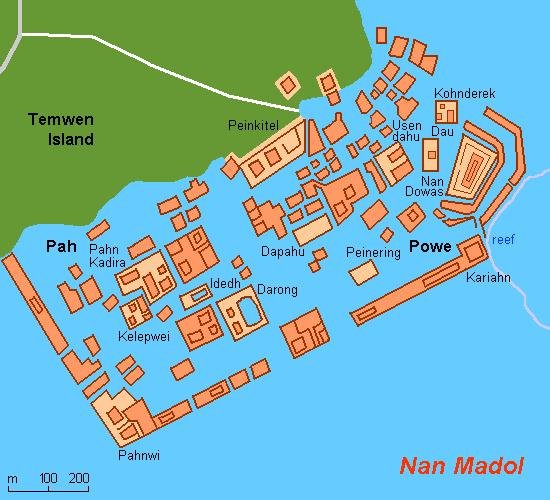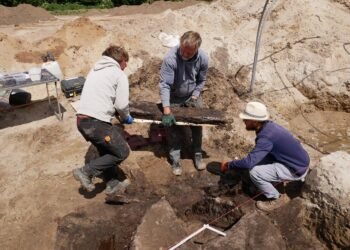Nan Madol is an ancient city located on the eastern shore of the island of Pohnpei in the Federated States of Micronesia. It is one of the most impressive archaeological sites in the Pacific region and holds great cultural and historical significance. The city was constructed by the Saudeleur dynasty, a ruling dynasty that thrived from the 13th to the 17th century.

Nan Madol is renowned for its unique architectural design and engineering feat. The city is an impressive complex of artificial islets and stone structures interconnected by a network of canals. It covers an area of approximately 18 square kilometers (7 square miles) and is situated in a tidal estuary, making it an extraordinary and challenging construction endeavor.
The most striking aspect of Nan Madol is the use of massive basalt stones, some weighing up to 50 tons, to construct the buildings and platforms. These stones were sourced from distant quarries and transported to the site, showcasing the engineering skills and labor organization of the Saudeleur people.
The stones were precisely placed to create elaborate structures, including royal tombs, temples, residential complexes, and ceremonial platforms.

The islets themselves were constructed by stacking stones and coral fill, creating foundations upon which the buildings were erected.
The canals running between the islets served multiple purposes, including transportation, access to the sea, and maintaining the agricultural productivity of the city. The intricate canal system was designed to control the flow of water, ensuring the stability and functionality of the city.
The purpose of Nan Madol remains a subject of study and speculation. It is believed to have served as the political and ceremonial center of the Saudeleur dynasty.
The large structures, such as the royal tombs, suggest that Nan Madol was a place of power and religious significance. It likely played a role in governance, hosting important ceremonies, rituals, and gatherings of the ruling elite.

Nan Madol’s architecture and engineering achievements are a testament to the organizational capabilities, social cohesion, and resource management skills of the Saudeleur society. The construction of such an impressive city required considerable labor and coordination over an extended period.
Today, Nan Madol stands as a UNESCO World Heritage Site and is a popular tourist destination. However, the site faces challenges such as erosion, encroaching vegetation, and the need for conservation efforts to preserve its unique structures and cultural heritage.























Comments 0